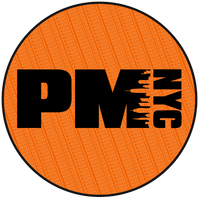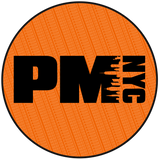DIY Design Mistakes to Avoid: A Guide to Creating Print-Ready Artwork

Designing your own apparel is exciting, but getting artwork print-ready can be tricky. A few common mistakes can lead to blurry prints, color mismatches, or designs that don't translate well onto fabric. But don't worry! We're here to help you navigate the technical side of design and ensure your custom apparel looks its absolute best.
1. File Formats Matter:
Not all file formats are created equal when it comes to printing.
- Vector is King: Whenever possible, use vector file formats like .AI (Adobe Illustrator) or .EPS (Encapsulated PostScript). Vector graphics are scalable without losing quality, ensuring sharp lines and details at any size.
- High-Res Raster is Your Friend: If you're working with raster images (made up of pixels), like photographs or detailed illustrations, use .PSD (Photoshop), .TIFF (Tagged Image File Format), or high-resolution .JPEGs.
- Avoid These: Steer clear of file formats like .DOC, .PPT, or low-resolution .JPEGs. These formats are not designed for printing and will likely result in pixelated or blurry prints.
2. Resolution is Key:
Resolution refers to the number of pixels per inch (PPI) in your image. Higher resolution means sharper details.
- Aim High: For apparel printing, aim for a resolution of at least 300 PPI.
- Don't Upscale: Enlarging a low-resolution image won't magically improve its quality. It's always best to start with a high-resolution image from the get-go.
3. Color Modes: RGB vs. CMYK:
Understanding color modes is crucial for accurate color reproduction.
- RGB for Digital, CMYK for Print: RGB (Red, Green, Blue) is used for digital displays, while CMYK (Cyan, Magenta, Yellow, Black) is the standard for printing.
- Convert to CMYK: Always convert your designs to CMYK color mode before sending them to a printer. This will help ensure the colors you see on screen are as close as possible to the final printed product.
4. Fonts: Outlines Are Your Friends:
If your design includes text, outlining your fonts is essential to avoid font substitution issues.
- Outline, Outline, Outline: Outlining converts your text into vector shapes, ensuring the font appears correctly, even if the printer doesn't have it installed.
5. Mockups: Your Preview to Perfection:
Before sending your design to print, create mockups to visualize how it will look on different apparel items.
- Catch Errors Early: Mockups help you spot potential issues with placement, sizing, or color combinations before going to production.
Partner with the Pros:
At PMNYC, we understand that not everyone is a design whiz. That's why we're here to help! Our team of experts can answer your questions, offer design advice, and ensure your artwork is 100% print-ready, so you can focus on creating awesome apparel that represents your brand or vision.
Ready to get started? Contact us today, and let's make your apparel dreams a reality!

